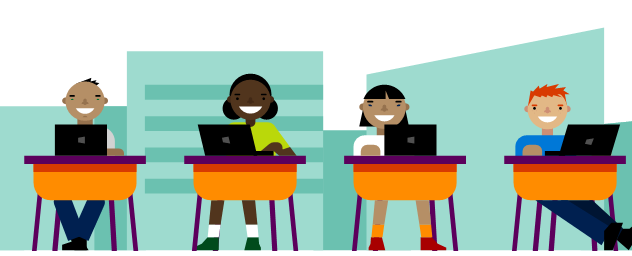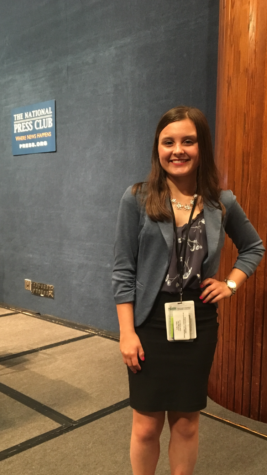Chromebooks at SBRHS: For Better or For Worse?
October 4, 2017
This year at Somerset Berkley Regional High School, each student will be assigned a Chromebook as part of a new one-to-one technology initiative. However, this change in school policy has caused passionate students and staff to speak about it with vigor, producing heated debate between supporters and opposers of the initiative within the four walls of SBRHS.
“The decision was made because it is a way of moving education forward for what’s best for students. This isn’t just about devices. It’s about teachers changing the way they teach,” Mr. Lanczycki, the principal of SBRHS, says.
Through the one-to-one technology initiative, each student will be issued a Chromebook by the school. This initiative was made possible this year in part by the reallocation of money in the budget.
According to Mr. Lanczycki, the Chromebooks were scheduled to arrive on Wednesday, September 27. The Chromebooks will be given out during the November advisory period (one class period every month that is dedicated to talking about certain issues that are not covered in academic classes).
Students are instructed to bring their school-issued Chromebooks to class every day. Mr. Lanczycki says that the model that was purchased is of better quality than that of the Chromebooks that are already in the school.
Although the battery life of the computers is 12 hours of straight use, students are encouraged to come to school with their Chromebook charged for the day. However, students will not be on their devices for all of their classes for the full period.
“It’s not really different than everything you’ve ever done,” Mr. Lanczycki says. “Think about what you would do with a textbook. It’s basically a better version of a book.”
Senior Olivia Lucianno says that students were given a packet at the beginning of the year that gave an outline of what the policy is. However, she thinks that “the student body will need an assembly about the Chromebooks in order for all of the students to get it.”
Sophomore Catin Moreira thinks the administration did a poor job of explaining the new policy to the students: “I had no idea we were getting Chromebooks until a friend told me about them. I’m still not exactly sure what getting a Chromebook entails.”
Mr. Lanczycki says that the process of implementing the one-to-one technology initiative has been in the works for five years now. “It wasn’t highly publicized but we were setting ourselves up for success,” Mr. Lanczycki says.
He says that the new school was prepared through the building process to create an environment that would allow the school to eventually implement the one-to-one policy. By the second year in the new building, students and staff were finally becoming adjusted to the new technology and setup that the school offered. After the third year in the new building, Mr. Lanczycki said that he felt the staff was ready to start the one-to-one initiative.
The initiative was mentioned to the teachers, so they knew that it would eventually arrive. Therefore, many teachers at SBRHS have started using the digital platforms Google Classroom and Schoology for assignments and testing.
Ms. Tinkham, a science teacher at SBRHS, says that she already utilizes Google Classroom: answer keys, the textbook, assignments, and labs are all online.
Mr. Pettey, a history teacher at the high school, has also started using Google Classroom.
Furthermore, an insurance fee of $30 has to be paid to the school district upon receiving a Chromebook. However, if a parent cannot afford to pay an insurance fee, it can be waived.
Moreira disagrees with the requirement to pay the insurance fee because some students already have devices that they bring to school, so she thinks they should not be required to pay for a different one.
Students are not allowed to use their own device in school. Mr. Lanczycki says that this is because certain software has to be put on the students’ devices. One of them allows teachers to monitor what students are seeing on their screens to ensure that everyone is doing what they are supposed to.
Lucianno says that she can see the reasoning behind students not being allowed to bring their own devices, but she does not think it is fair. “They could just have the Wi-Fi block certain sites like it’s done before,” says Lucianno. “I think that might have been a better alternative because I do think some students like using their own devices better.”
The seniors at SBRHS will not receive new Chromebooks this year. Instead, they will be given the Chromebooks that the school already has. Mr. Lanczycki says this is because the seniors are only going to have it for one year whereas the other students are going to have them for multiple years.
The goal was originally to buy new Chromebooks for all of the students, but the decision was made to do three-quarters of the school instead because of issues with the budget. Mr. Lanczycki says that hopefully next year the school will be able to purchase the last quarter of the Chromebooks.
Lucianno thinks “the freshmen should have gotten them because that’s how things typically go within schools: seniors typically get newer, nicer stuff while the freshmen usually work their way up to it.”
Mr. Lanczycki states that students will keep their Chromebooks throughout their four years at SBRHS. Therefore, students can keep the computers over the summer and will not be required to return them when school gets out in June. However, when students graduate, the Chromebooks are returned to the school.
At the end of the last school year, a survey was sent out to students to discover what they thought about introducing the one-to-one technology initiative and what type of technology they would like to have.
Mr. Lanczycki said that the results of the survey were taken into account when deciding the type of technology. However, he said that many students wanted MacBooks but that the school unfortunately cannot afford them.
He says the Chromebooks provide technology that is both cost-efficient and fits the school’s needs.
Moreira says that she is not a huge fan of the one-to-one technology initiative. Although she realizes that the school is trying to do something good for its students, “I’ve always been someone who really likes writing with a pen and paper and I’m not good with technology, so my experiences with Chromebooks have been rough.”
On the other hand, Lucianno thinks the one-to-one technology initiative is a good idea. “Different students have different programs available to them at home so it seems like an equalizing factor. However, I think the chosen piece of technology could have been a little different.”
Although the teachers were aware that the one-to-one technology initiative was coming eventually, Mr. Lanczycki says that “you can’t do everything by committee.” Therefore the decision to finally implement the policy was mostly an administrative one.
Despite this, teachers will still have the authority to use the Chromebooks and teach in their classroom as they see fit.
Mr. Pettey says he is excited for the one-to-one policy. “I think it’s the way of the future. It’s going to make us better teachers and students.”
Ms. Tinkham says that “it’s exposing you to experiences that will give you a broader scope for when you’re no longer in high school.”
Mr. Pettey says that he will try new methods of teaching with the introduction of the Chromebooks. In the past, he has done a lot of direct instruction and lecturing but, with the Chromebooks, he will try dividing his class into groups and assigning them different subtopics for major events in history. The students will then share the information they have on their subtopics with the other groups through a presentation.
He says that students will be collaborating over content while he will be there for expertise in the background.
Ms. Tinkham says that the Chromebooks will not change the way she teaches. Because she requires that students show their work when solving problems that can be difficult to show on the computer, she will continue to give paper tests. She says that she only might do multiple choice tests online.
Mr. Pettey says that he will also continue giving paper tests, especially for his Advanced Placement United States History (APUSH) classes. Because the College Board exam for APUSH is on paper, he wants students to be used to what they will see on the test. However, he says that if the College Board switches to an online test in the future, he will too.
Ms. Tinkham thinks that incorporating the Chromebooks will be “more of a learning curve on the teachers’ parts than on the students’ parts. Students already know how to use the Chromebooks. Teachers will need to learn how to build things in Google and use sites like Google Classroom. We weren’t born with the technology; we’ve been introduced to it later in life.”
Mr. Pettey says he wants to calm the student body: “Change is a certainty. There are much bigger changes in life than getting Chromebooks.”
Mr. Lanczycki says that with the new one-to-one technology initiative, there is no need for students to use their cell phones in class anymore. It was allowed initially so that most people could have a small, portable device in their hand that could be used for educational purposes.
“We’re not telling people they can’t have phones in the building. It can be in your pocket, you just can’t pull it out in a classroom,” Mr. Lanczycki says. “We’ll even let you use it during study halls or in the library if you want to listen to music with one earbud.”
Mr. Lanczycki says that the Chromebooks keep the equity among everyone in the school. “The kids who live in more economically abundant houses who have $1200 Apple products are not getting an advantage over the kids who don’t. Everyone is on the same page,” Mr. Lanczycki says.
The one-to-one technology initiative is supposed to teach students 21st century skills, such as collaboration, creativity, critical thinking, and problem solving, that will translate to any job. These 21st century skills are what colleges and businesses look for.
The devices will allow teachers to cover the content that is mandated by the state more efficiently, therefore allowing time to focus on interpersonal skills.
“It’s something new, so of course people don’t like change,” Moreira says. “Even though I like paper so much more, I don’t think that doing schoolwork on the computers versus on paper will really affect learning that much.”
While Lucianno is looking forward to the more consistent use of technology by her teachers, she worries that “if students continuously forget their Chromebooks or have a lot of technical issues, it could hinder the classes and cut into learning time.”
While Mr. Lanczycki thinks that the introduction of the one-to-one policy could cause a jump in MCAS (Massachusetts Comprehensive Assessment System) and SAT scores, the biggest improvement will come in things that the high school does not test for: 21st century skills.
Mr. Lanczycki understands that the student body is nervous about getting the Chromebooks, but he urges students to give it a chance.
“I understand why some teachers are nervous. We want the staff to take chances. If it fails, we will learn from it and move on,” Mr. Lanczycki says. “For students, the Chromebooks get them ready for the next step. Using this technology now will help students adjust to life in college.”
“It’s not going to be perfect on the day after the rollout,” Mr. Lanczycki says. “It’s going to take some time but it’s a great first step.”



